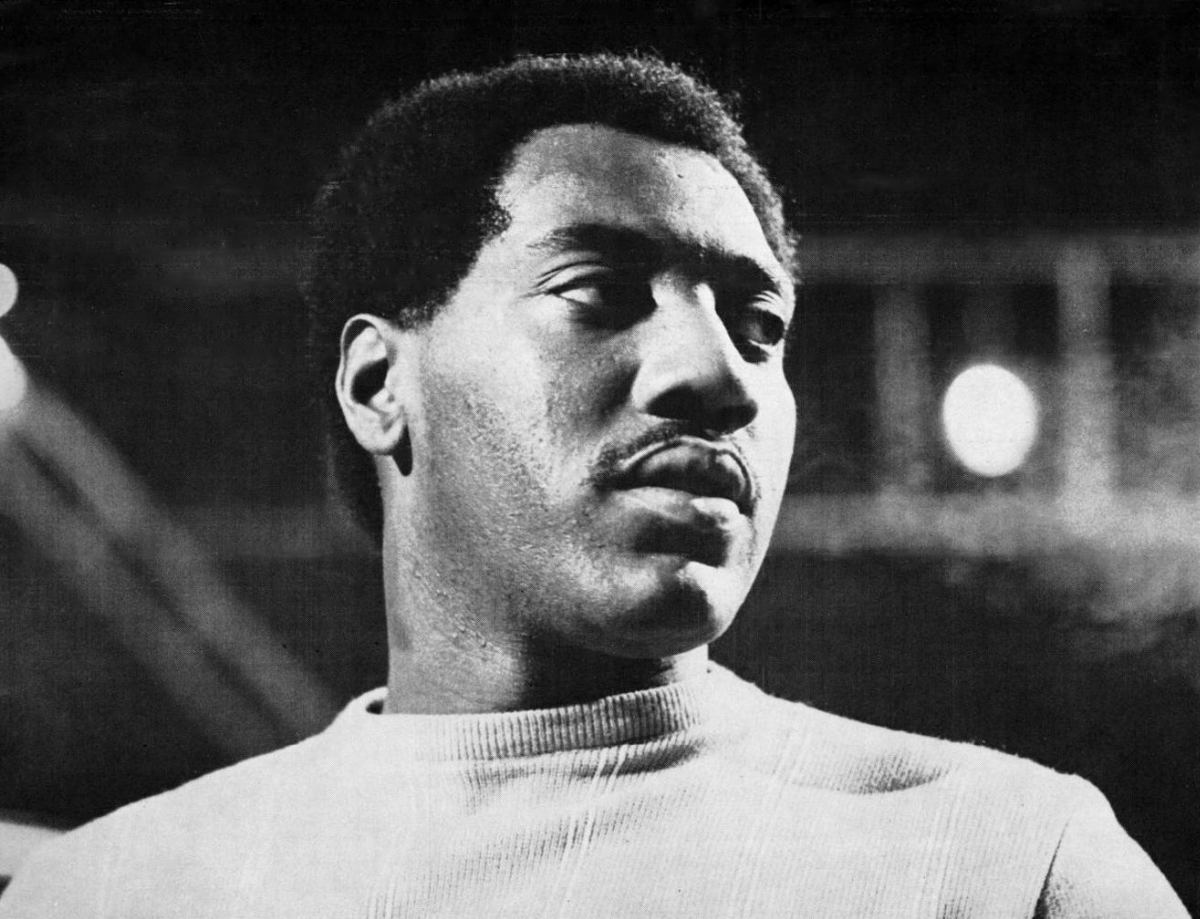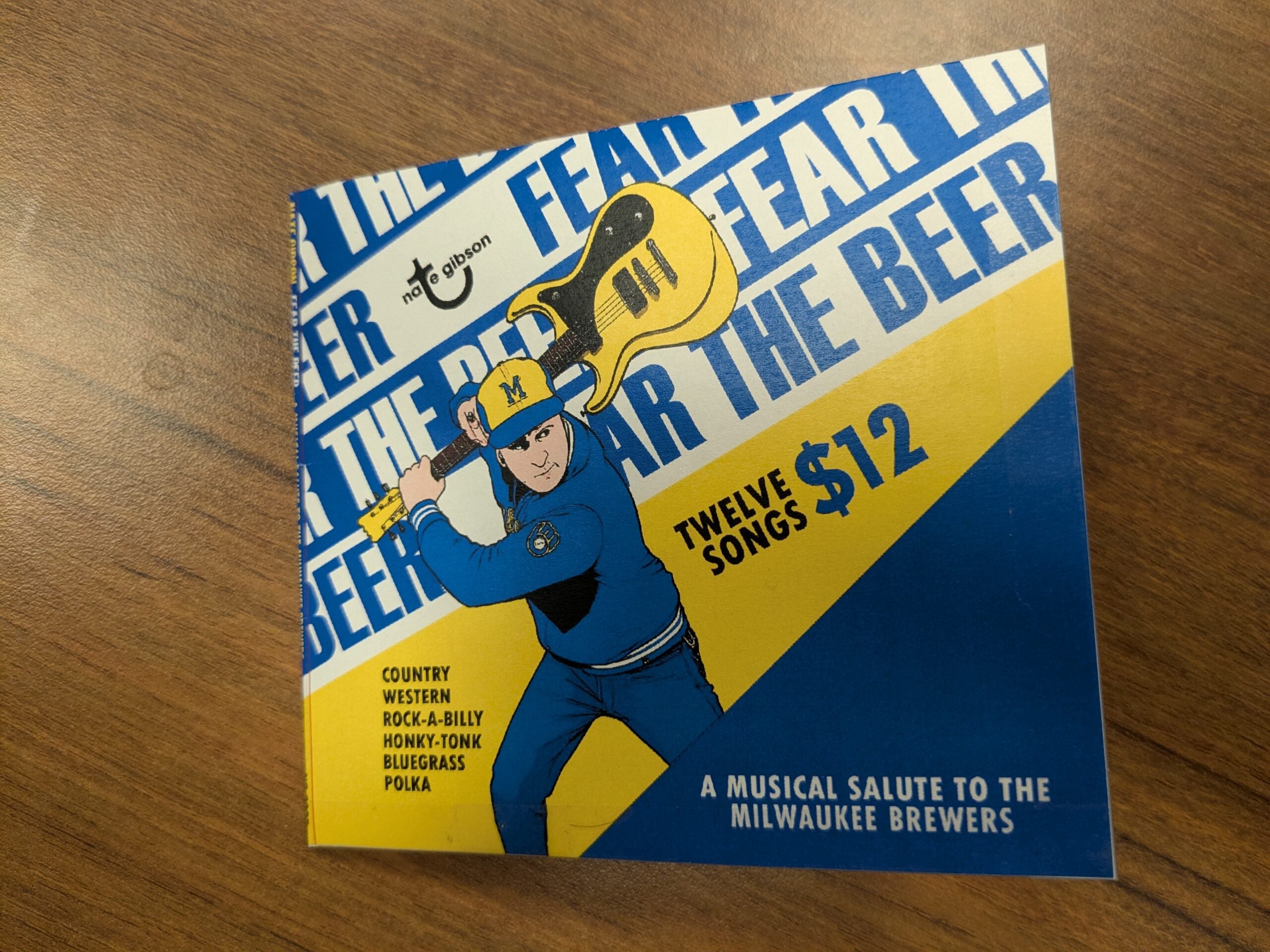Half a century after his death, singer Otis Redding still has an uncanny power to move people.
Perhaps this shouldn’t come as a surprise. On record or the concert stage, Redding spent most of his brief music career striving to draw out his audience’s emotions — love, pity, sadness, passion — through simple, two-minute pop songs delivered by a sanctified master seducer.
Fifty years after his surprising death in a plane crash in Wisconsin, it’s a seduction many can’t help but continue to fall for. And why shouldn’t we. Redding remains a foundational figure in modern pop music. He is a towering presence whose work became the template for modern R&B. His songs, spread over only a handful of records, are the embodiment of soul music. No other music figure of the 1960s — apart from Jimi Hendrix — left behind a vast legacy achieved in only a few short years while also offering so much untapped potential that in death would never be realized.
News with a little more humanity
WPR’s “Wisconsin Today” newsletter keeps you connected to the state you love without feeling overwhelmed. No paywall. No agenda. No corporate filter.
Redding’s death, coming at the height of his fame, crystallized his career on the upswing and him at the height of his powers. It was, by any accounting, a tragedy. Redding and several members of his backing band were killed on Dec. 10, 1967, when his private plane crashed into Lake Monona en route to a Madison concert. He was only 26 years old.
His name might have faded in familiarity recently, one only cited in musician interviews or a passage in history books. However, his musical legacy is just as potent as it was. Everyone from Kanye West to Lauryn Hill to Pearl Jam to Charles Bradley have acknowledged their debt to Redding and drawn on his music’s lingering power to stir audiences. Since his death, enterprising listeners from each succeeding generation can find themselves following under the sway of his perfect, romantic ditties, just as all those hippies did during his legendary performance at the Monterey Pop Festival in 1967. That is how strong his love is.
Here’s a compilation of songs — well-known selections, as well as overlooked gems, from his discography — that are ample evidence of why Redding deserves a treasured place in pop-music history.
Here are the songs, in no particular order:
“These Arms Of Mine”
Otis Redding’s heart appeared as big as his throaty voice. His singing on “These Arms Of Mine” — naked, brave and always palpably vulnerable — are the embodiment of a storybook love that might seem outdated in the post-irony world.
And yet, this breed of romanticism retains a sneaky power to make listeners fall head over heels despite all of the hooey. Redding is a man consumed with obsession (and thankfully free of any creepy, stalker-ish aftertaste). As the song fades out, Redding keeps riffing on the object of his desire, offering more worshipful details that the producer mercifully excises out so listeners keep focus on his main thrust. “Otis, we got it already,” might have come across the studio intercom even though Redding’s beating heart might have sought to rant all night long.
Special credit goes to guitarist Steve Cropper’s trilling guitarwork on the bass strings, which accents the coiled tension as Redding pleads for the salvation from the woman he loves.
“I’ve Been Loving You Too Long”
By all accounts, Redding’s appearance at the Monterey Pop Festival was a watershed moment. Many performers on the bill captured the popular imagination during the concert — Hendrix, Janis Joplin — but Redding had more obstacles to overcome than just an audience’s unfamiliarity with his rising talent.
Musical segregation continued to be the norm and this opportunity to appear before a mostly white, rock-leaning audience was a rare crossover opportunity. Redding seemed to realize the magnitude of this moment and brought out every advantage to win the crowd and make a lasting impression. First, he packed his five-song set with hits (both radio smashes for himself as well as others, including Aretha Franklin’s “Respect” and the Rolling Stones’ “Satisfaction.”) Second, the show marked one of the few times that his frequent studio collaborators at Stax Records, Booker T. and the MGs, were brought in for this marquee gig. Cropper and the rhythm section of keyboardist Booker T. Jones, bassist Donald “Duck” Dunn and drummer Al Jackson Jr. offered a precision that represented the ideal platform to introduce Redding’s music.
Meanwhile, Redding used all of his tricks as a showman to wow new converts. On stage, the performance offered a very conflicting visual. Redding looked like an old-school, overly slick entertainer in his green silk suit and soul-band revue amid the beads and flowers arraying this army of the proto-Woodstock Generation. To prove he wasn’t a Rat Pack wannabe, Redding used all his onstage shtick to win them over. From the recordings and the film, he was wildly successful.
Case in point was his take on a smoldering “I’ve Been Loving You Too Long.” As he leads the band through this slow, aching drawl of heartache, he stops the group mid-song to repeat again and again the horn breakdown. Redding smiles behind the microphone as he moves and punctuates each horn blast with his body. He’s laughing at his own joke. He and the group just as quickly dive back into the ballad, but with the audience ever changed, their attention firmly on Redding’s every word and gesture.
This performance is a masters course in onstage persuasion.
“Merry Christmas, Baby”
“Merry Christmas, Baby” should, on the surface, be written off as just a cheap, novelty song. The track was a B-side for Redding’s rather obvious cover of “White Christmas” and appears to be the kind of material designed to make record companies and radio DJs happy with fresh, holiday season content.
In Redding’s hands, however, this old chestnut proves far more interesting. Although the song is adorned with shaking sleigh bells and Redding must slalom through lines of inconsequential lyrics, he manages to create a little Christmas magic.
Augmented by some Al Kooper soundalike organ that could have been stripped from Bob Dylan’s “Positively Fourth Street,” the song still retains many trademark Stax ingredients with a driving rhythm, horn section punctuations and beautiful guitar notes wrapping the melody in a big bow.
Redding largely uses his vocal charisma to leave a positive mark, making this ditty something worthy of including in any holiday playlist.
“I Can’t Turn You Loose”
Like “Merry Christmas, Baby,” “I Can’t Turn You Loose” was a B-side that became more popular than the flip side of the single.
The cut is likely best remembered today because of how it was used, in instrumental form, several times in “The Blues Brothers” movie. Both Cropper and Dunn appeared in the film as members of John Belushi and Dan Aykroyd’s backing group and a high-energy rendition of the song was used twice during the flick, including the infamous mall chase sequence.
Redding’s version is a rhythm vamp that has him locked tight into the groove, raving and shouting to keep it all going.
This video, taken from a British TV show, is full of several ’60s clichés that make it even more enjoyable.
“I’ve Got Dreams To Remember”
Coming after “I’ve Been Loving You Too Long,” “I’ve Got Dreams To Remember” is a variation on a theme. That said, Redding goes deeper in the lyrics and in his emoting to mine an even deeper vein of sorrow.
The track begins with a similar music premise, but branches off in directions to make this not just a complete retread. For one, we discover nothing new beyond how deeply love turning into despair can root into a romantic’s soul. Redding’s voice personifies this conviction perfectly.
The MGs return as well and offer more flourishes that envelope Redding’s pleading. Cropper’s guitar arpeggios are still the prominent, melodic wingman to Redding’s vocals. Now, though, Jones’ organ playing ushers in the song’s climax with a coda searing in needy exultation.
“Hard To Handle”
“Hard To Handle” is hard-hitting city blues that was so widely covered that many might have forgotten that Redding originally co-wrote the song.
Redding made his name as a ballad singer and here he is showing his versatility as the ringleader of this funky Southern roadshow. The band is deep in the pocket and the horns bleat as Redding is the fast-talking impresario that should transform any seated customers into a dance floor.
In subsequent years, the Grateful Dead and the Black Crowes did notable versions, with the Dead’s take on the song — sung by keyboardist Ron “Pigpen” McKernan — retaining much of Redding’s rhythmic swagger.
“Papa’s Got A Brand New Bag”
Redding was a savvy businessman and he knew that moving product was the order of the day. For that reason, he recorded plenty of covers, including contemporary hits, in order to keep his music on the always-fickle airwaves.
Redding didn’t discriminate based on style, nor was he dissuaded by some rather definitive performances. He tried out versions of the Beatles’ “Day Tripper” and the Rolling Stones’ “Satisfaction” just as passionately as stylistic sympatico selections like Sam Cooke’s “A Change Is A Gonna Come” or Ben E. King’s “Stand By Me.” (He even did a version of garage-rock anthem “Louie Louie” and Bob Dylan allegedly tried to get him to record “Just Like A Woman.”)
Funk, and particularly James Brown’s “Papa’s Got A Brand New Bag,” might have appeared an odd choice though. Funk was then only emerging as an offshoot from R&B, blues and rock and Brown was its leading exponent. All of that against him, Redding acquits himself wonderfully here.
“Papa’s Got A Brand New Bag” was recorded live at the Whisky a Go Go in Los Angeles in the spring of 1966 (and released posthumously in 1968) and features an energetic, loyal reading of Brown’s version. Redding’s backing band, the Bar-Kays, don’t have the militarized exactitude of Brown’s musicians, but they capture the joy of the groove.
Hearing Redding in place of Brown behind the mic is an interesting contrast, like watching a famous actor like Robert Redford audition for Al Pacino’s role in “The Godfather.”
In another timeline perhaps, Redding might have been the “Godfather of Funk” instead of the “King of Soul.”
“(Sittin’ On) The Dock Of The Bay”
Released shortly after Redding’s death, “(Sittin’ On) The Dock Of The Bay” is his best-loved song and a offers several tantalizing hints of the new directions that Redding might have gone in had he lived.
Consumed with a sense of loneliness and world weariness, the song’s lyrics are presented in a narrative form that is something of a departure for Redding. “(Sittin’ On) The Dock Of The Bay” is almost a short story in the cinematic visage it depicts. Co-written with Cropper, the guitarist finished the track after the plane crash, adding the sounds of seagulls and ocean waves to complete the picture the pair sought to conjure.
The song topped the Billboard charts after Redding’s death and its easygoing, whimsical melody has made it a straightforward cover for a wide-ranging roster of performers like Sammy Hagar, Glen Campbell, Justin Timberlake, Waylon Jennings and Willie Nelson, among others.
“Try A Little Tenderness”
Redding used “Try a Little Tenderness” strategically during his live shows to push his audiences to their limits. This performance, captured in Norway in 1967, is an example.
Again backed by Booker T. and the MGs, Redding used their formidable skills to galvanize the crowd of longhairs to a kind of religious ecstasy. Redding’s set was part of a Stax Records package tour of Europe that also included Sam and Dave, among others, but “Try A Little Tenderness” established why he was the headliner.
If Redding’s plan to go back and forth behind the curtain was planned, some of the band doesn’t look like they’re in on the act. Cropper has his poker face on, but “Duck” Dunn is laughing when Redding is between his third or fourth return visit. The audience appears in frenzy and so Redding’s mission is accomplished.







